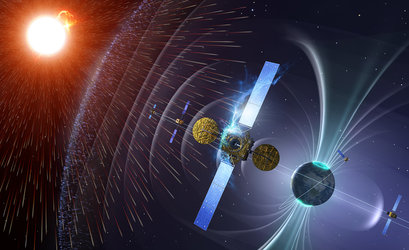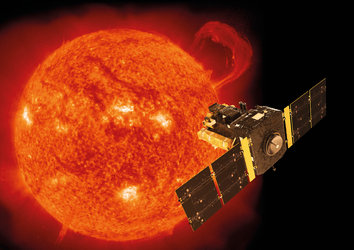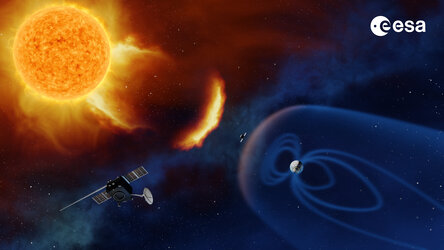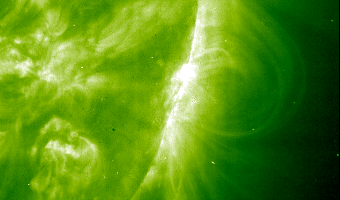Space Weather Office
The objective of the Space Weather Office is to provide owners and operators of critical spaceborne and ground-based infrastructure timely and accurate information to enable mitigation of the adverse impacts of space weather.
In order to achieve accurate and reliable services for customers, constant monitoring of the Sun and the space environment from a range of vantage points is needed, together with timely dissemination of reliable data to those needing the information.
Europe already has a wealth of expertise and assets providing high-quality scientific observations, results and models in the domain of space weather, together with a growing number of space-weather 'products' − processed, usable data − which are being used by customers across Europe in industry, government and research institutes.
The Space Weather Office is building on this foundation to develop a federated space-weather service-provision concept, avoiding duplication and ensuring that existing assets and resources play a key role in ESA’s Space Weather System.
ESA’s Space Weather Service Network
ESA's Space Weather Network is now being developed so as to provide these services and it consists of the following main elements:
| Coordination Centre | ESA's Space Weather Coordination Centre (SSCC) is located at the Space Pole, in Brussels, Belgium, and provides support and service availability monitoring to customers and end-users across Europe |
| Expert Service Centres | There are five 'Expert Service Centres' (ESCs) consisting of ~40 teams from organisations across Europe who are collaborating to provide tailored products and services for Space Weather Network customers. The five centres are organised according to the following domains, each with a coordinating institute:
|
| SWE Data Centre | ESA's Space Weather Network is supported by a data centre hosted at ESA's European Space Security and Education Centre, Redu, Belgium, providing access to the ESA Space Weather Service Network website and a large data repository |
The Space Weather Network is currently in an intensive development phase targeted at developing both customer-tailored interfaces and key models as well as other building blocks that will contribute to improving the accuracy of the information that can be provided to end-users.
The Network is now being managed in a 'pre-operational' framework, with live support available only during normal working hours. In the future, steps will be taken to mature the service provision system and prepare the Network for transition to a fully operational framework.
ESA's Space Weather Services
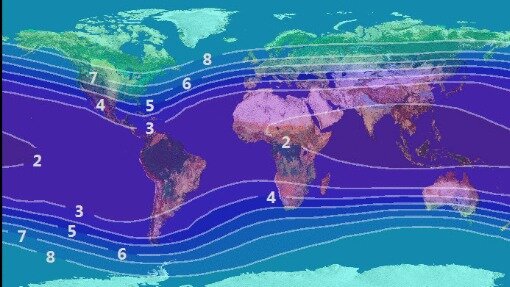
ESA’s space weather services enable the detection and forecasting of space weather events, and their effects on European space assets and ground-based infrastructure. Each of the defined space weather services consist of multiple elements and target the needs of customers/end-users in the following domains:
- Spacecraft design and spacecraft operations
- Human spaceflight
- Launch operations
- Communications and navigation
- Space surveillance and tracking
- Operation of power grids and power distribution systems
- Airlines and aviation
- Resource/mineral exploration/exploitation
- Pipeline operations
- Auroral tourism
- General data services
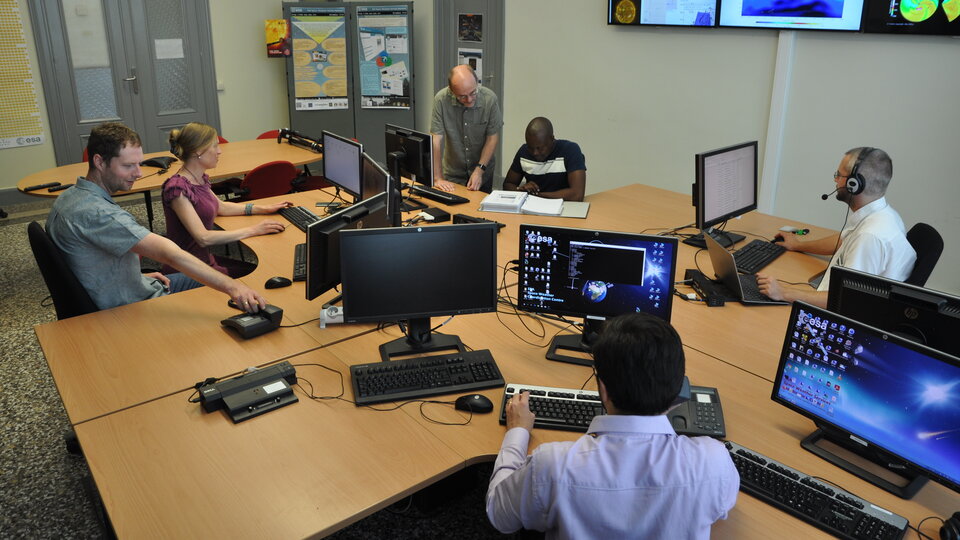
Each of the space weather services brings together state-of-the-art European assets and expertise in order to provide customers/end-users with the most timely and relevant information for their intended purpose. These services consist of:
- 'Products' - processed, usable data sets
- Toolkits
- Reporting/alerting
- Expert support
These elements are provided in each case by the teams forming the ESA Space Weather Service Network and are accessed by customers through a dedicated website operated by ESA's Space Weather Coordination Centre and providing online guidance, data and support.















 Germany
Germany
 Austria
Austria
 Belgium
Belgium
 Denmark
Denmark
 Spain
Spain
 Estonia
Estonia
 Finland
Finland
 France
France
 Greece
Greece
 Hungary
Hungary
 Ireland
Ireland
 Italy
Italy
 Luxembourg
Luxembourg
 Norway
Norway
 The Netherlands
The Netherlands
 Poland
Poland
 Portugal
Portugal
 Czechia
Czechia
 Romania
Romania
 United Kingdom
United Kingdom
 Slovenia
Slovenia
 Sweden
Sweden
 Switzerland
Switzerland


























